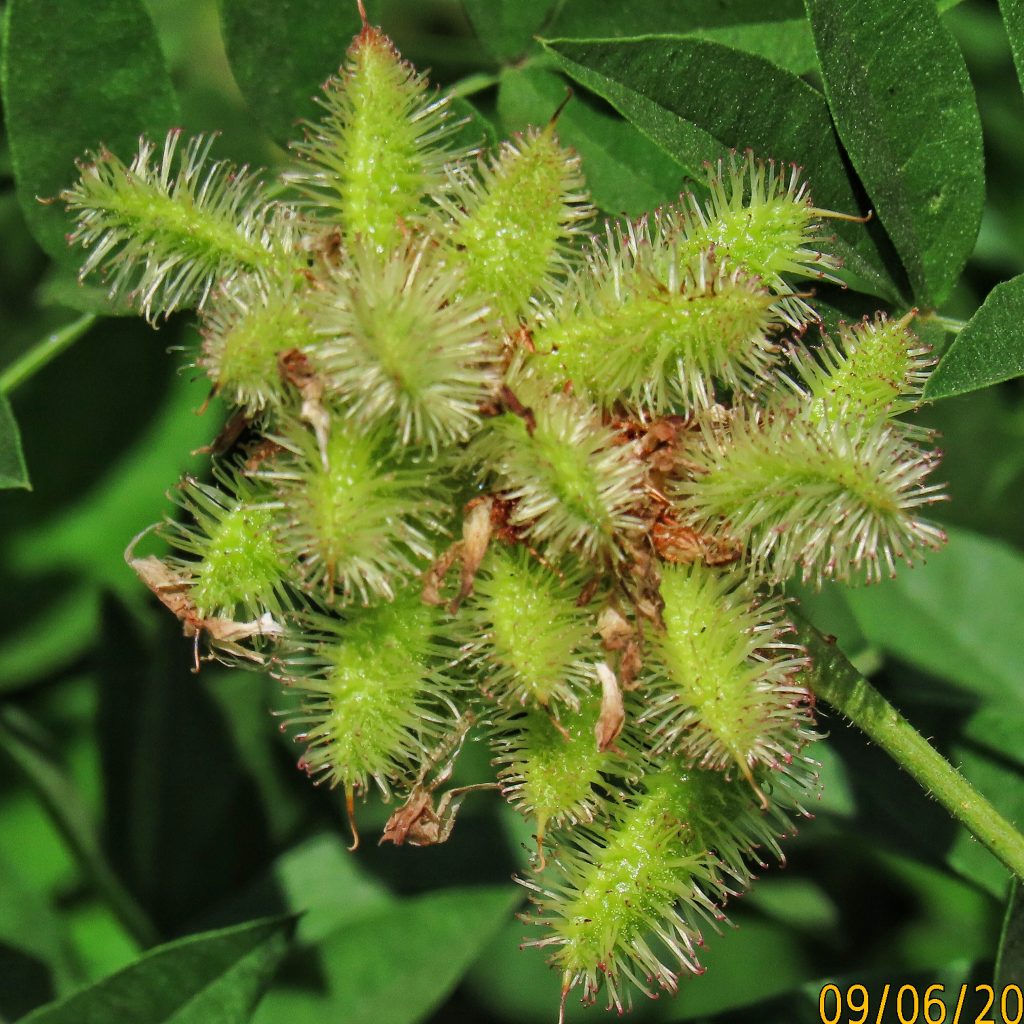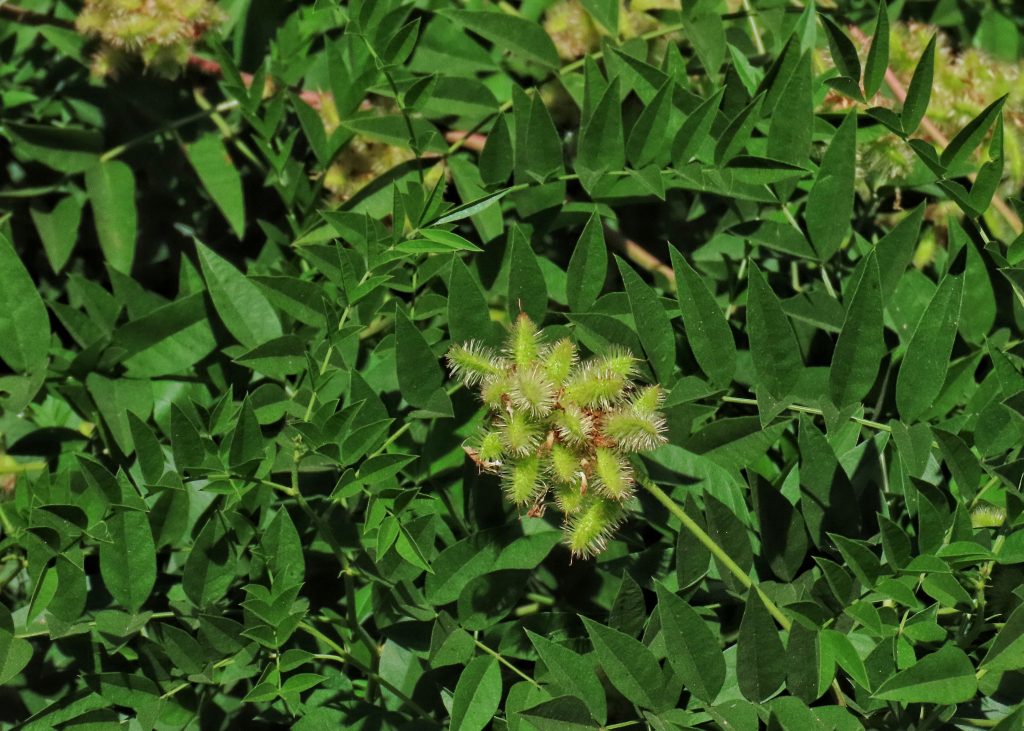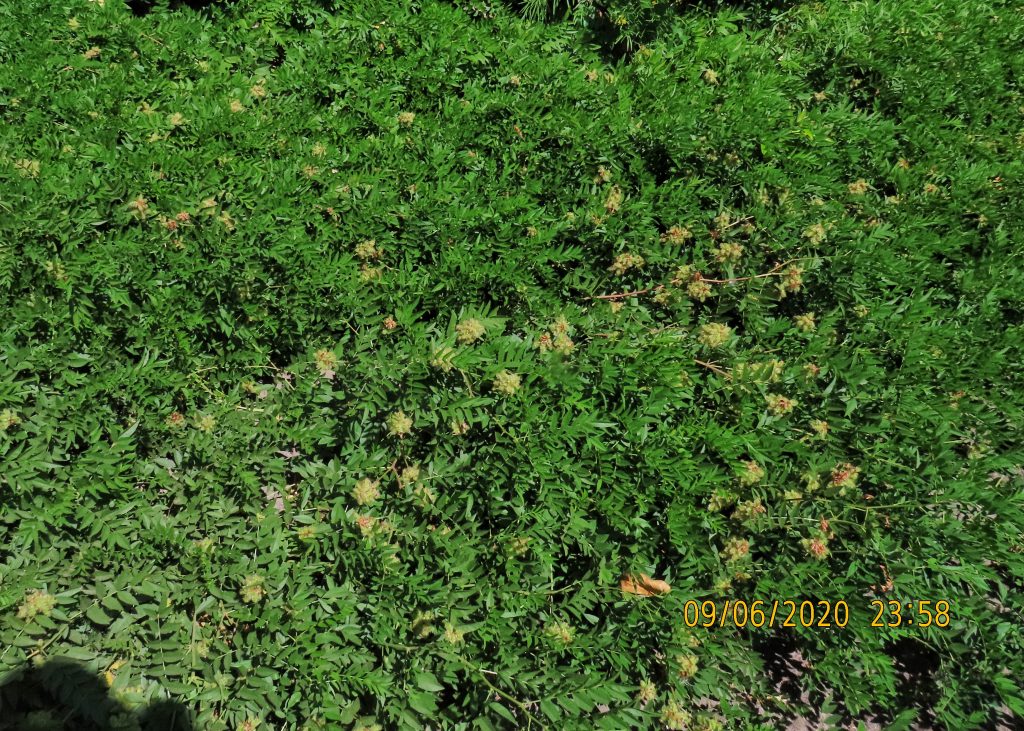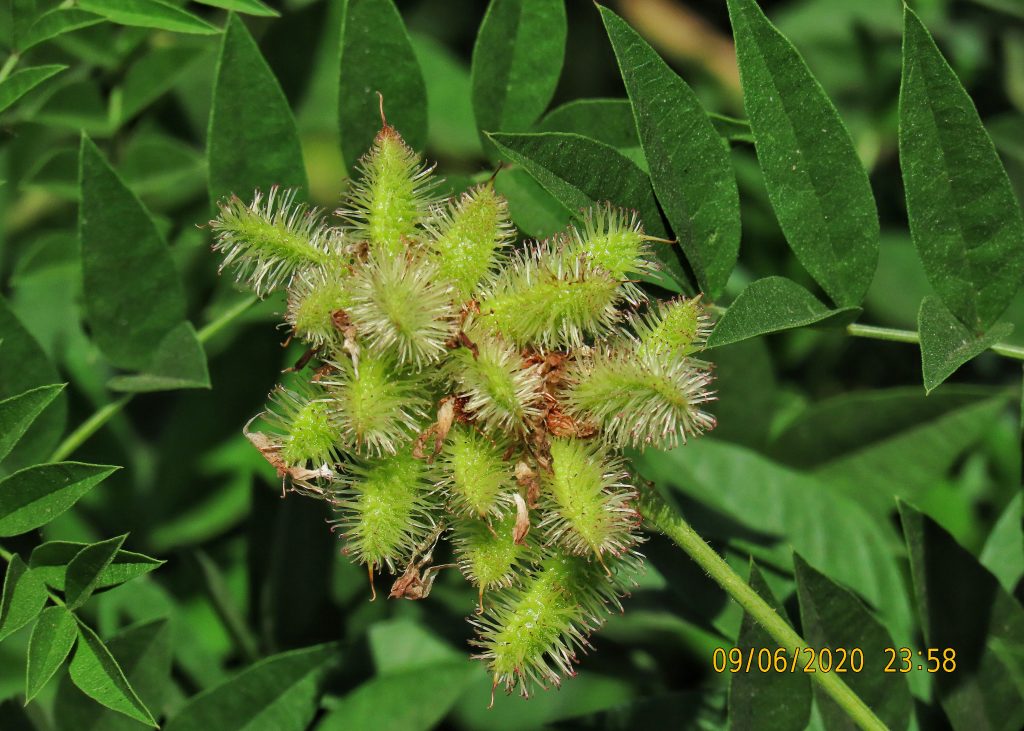
This is a sprawling member of the legume family (Fabaceae), which likes damp, sandy soil and is often found along rivers and ditches. Stems are covered in sticky hairs and can be several feet long, but seldom is the plant more than 3’ tall. Leaflets lanceolate, opposite, 9-19 per branch. Peaflowers greenish white to yellow, in an elongated cluster. The seed pods are clothed in spines with hooked tips, although whether this is for protection or to attach to animals for distribution I cannot ascertain.

This native species is primarily found east of the Cascades near the Oregon/Washington border, and along both states border with Idaho. But populations have been extending downstream along the Columbia. This is the first time I’ve seen this species in Clark County, Washington, and it was along the Columbia.
Native Americans used this root for food and medicinal purposes. And the genus name Glycyrrhiza means sweet root, although the glycyrrhizin responsible for its sweetness has been shown to elevate blood pressure.
American Licorice is a host plant for the butterflies Silver Skippers (Epargyreus clarus), Grey Hairstreaks (Strymon melinus) and Melissa Blues (Plebejus melissa).

Glycyrrhiza lepidota | American Licorice | Wildflowers of the Pacific Northwest
https://en.m.wikipedia.org/wiki/Glycyrrhiza_lepidota
https://pfaf.org/user/Plant.aspx?LatinName=Glycyrrhiza+lepidota
Size- Up to 3’ tall
Habitat- Damp,sandy soil
Range- Primarily east of the Cascades; Native
Blooms- Mid summer

Wow – interesting. And the pods are beautiful!